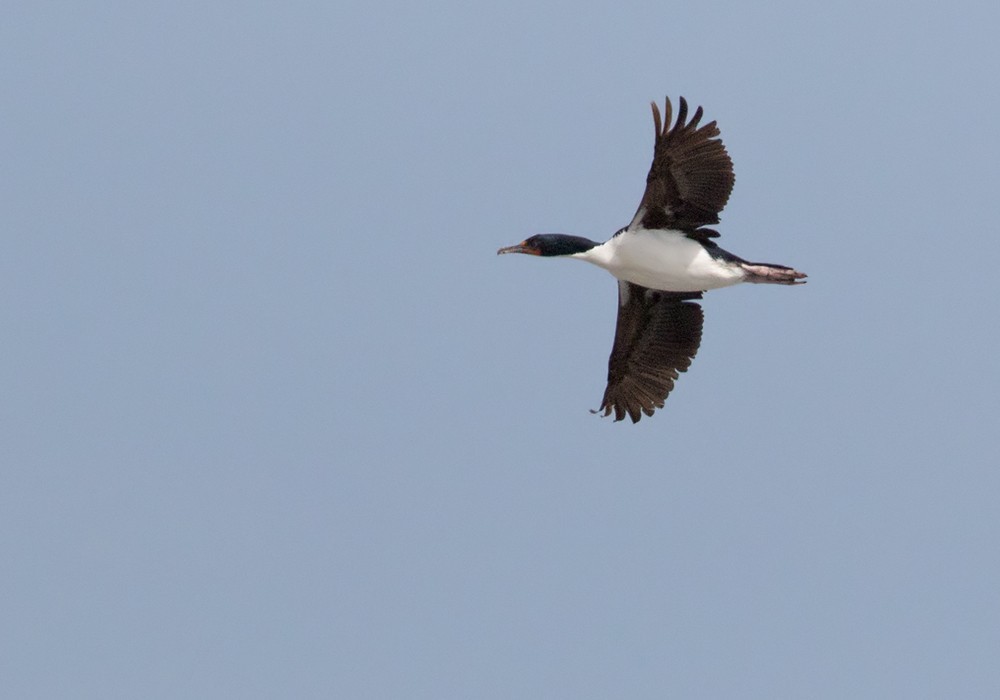Chatham Islands Shag
A species of Cormorant, Also known as Chatham Island Shag Scientific name : Leucocarbo onslowi Genus : Cormorant
Chatham Islands Shag, A species of Cormorant
Also known as:
Chatham Island Shag
Botanical name: Leucocarbo onslowi
Genus: Cormorant
Content
Description General Info
 Photo By Lars Petersson
Photo By Lars Petersson Description
An adult Chatham shag is 63 cm (25 in) in length and weighs around 1,790–2,400 g (63–85 oz). It is a large pied shag with a white throat, breast, belly and patches on the scapulars of the wings, and black or black-brown elsewhere. When breeding the head and hind-neck have a blue metallic sheen, the wings and mantle have a greenish sheen and the rest of the black areas have a purplish-blue sheen. The head has a prominent crest and there are white filoplumes on the neck. Adults have a red gular sac and orange-red caruncles on the face and the gape of the mouth. In spite of the common name of the genus the iris of the eye is brown, and the eye has a violet eye-ring. The bill is dark grey, with a bright red mouth, and the legs and feet are dull pink. Non-breeding birds look similar to breeding birds but are duller, have no crest or filoplumes, and duller bare parts. The caruncles are yellow, the eye-ring blue, the mouth orange and the bill is light-grey. 
Size
63 cm
Nest Placement
Cliff
Feeding Habits
Chatham Islands Shag dives using its feet to hunt fish like opalfish and flatfish and cephalopods, including octopuses. It often feeds solo but sometimes forms small groups.
Habitat
Chatham Islands Shag predominantly inhabits marine environments near the coast, often foraging within a few kilometers offshore in sheltered waters such as bays and inlets. Its breeding grounds are typically on rocky coastal zones and small offshore islands, where it nests on accessible flat areas, slopes, or wide cliff ledges, occasionally close to the high-tide mark. For roosting, chatham Islands Shag prefers coastal rocks.
Dite type
Piscivorous
General Info
Feeding Habits
Bird food type
Distribution Area
The species is endemic to the Chatham Islands, an archipelago around 700 km (430 mi) to the east of New Zealand. In the Chathams it is an inshore species, rarely going more than a few kilometres away from shore, and it is more commonly found in sheltered water such as bays and inlets. It also forages in the large brackish Te Whanga Lagoon. It breeds in colonies on coastal areas and around Te Whanga Lagoon, either on flat areas, slopes or wide cliff ledges. There are currently thirteen colonies of this species, found on the main Chatham Island as well as Pitt Island, Star Keys, Rabbit Island and North East Reef. These colonies are located close to the high-tide mark and can have as many as 300 nests in them. It roosts on rocks close to shore or at sea, although it may have different roosting sites for day and night. The species is non-migratory and has never been recorded away from the Chatham Islands, although the species does feed and roost on islands in the Chathams away from their breeding colonies, for example Mangere. 
Species Status
The Chatham shag is threatened by a range of human activities and threats. The species is sensitive to disturbance at its breeding colonies, as nests are trampled by stampeding adults and nests are opportunistically raided by silver gulls after the eggs are unattended. At worst, entire colonies have been abandoned due to disturbance by people or stock. Colonies on the main islands are also vulnerable to introduced predators such as weka, feral cats and possums. It is considered critically endangered by the IUCN. 

 Photo By Lars Petersson
Photo By Lars Petersson Scientific Classification
Phylum
Chordates Class
Birds Order
Gannets and Relatives Family
Cormorants Genus
Cormorant Species
Chatham Islands Shag